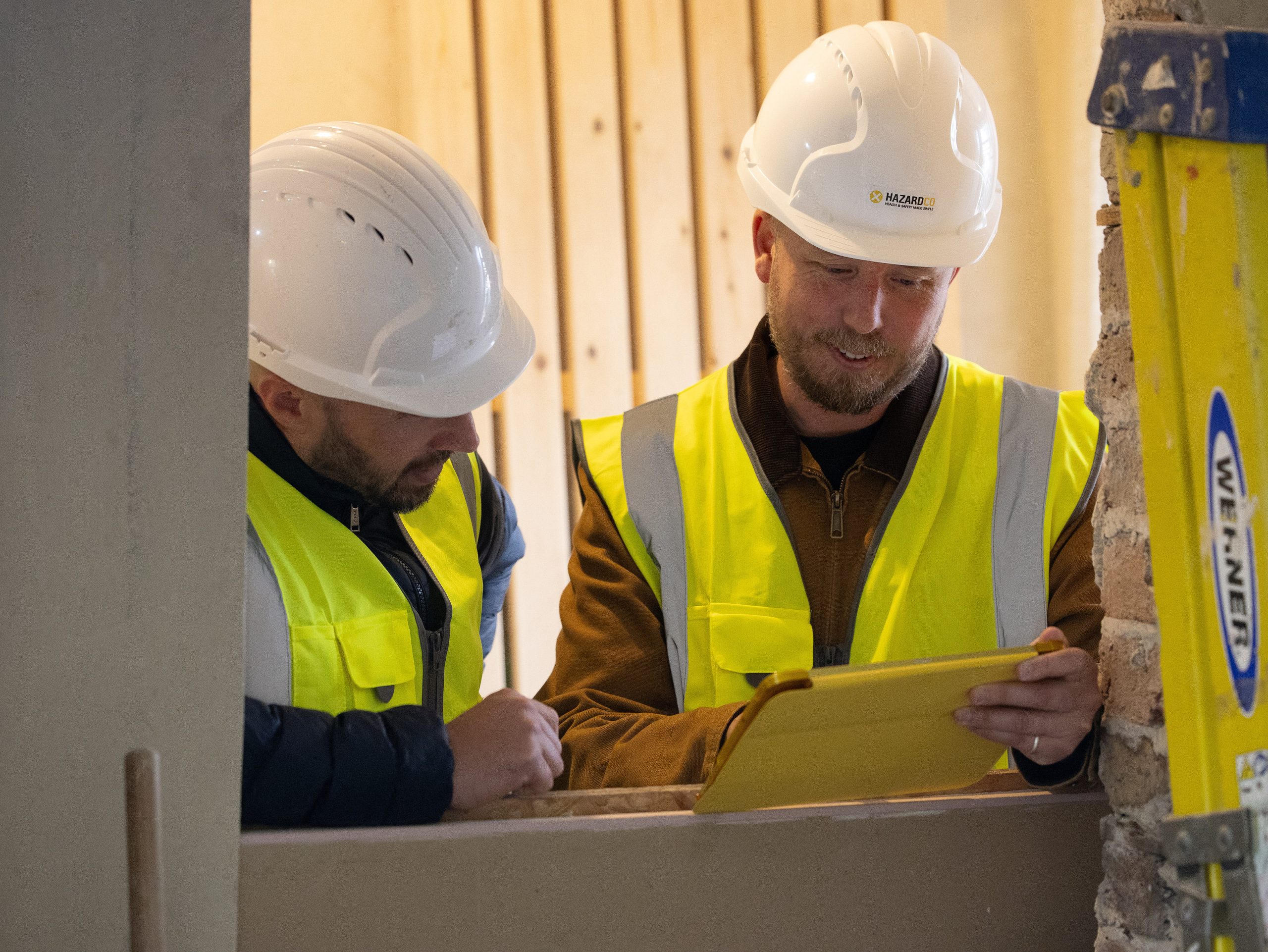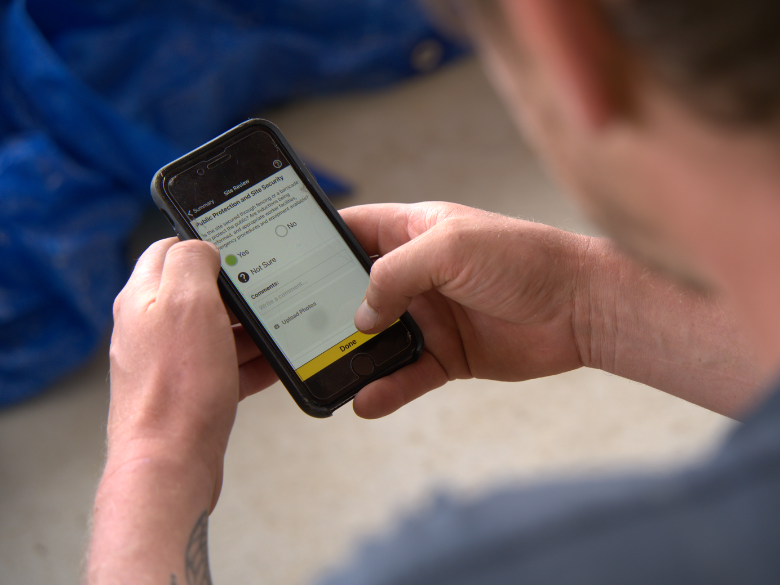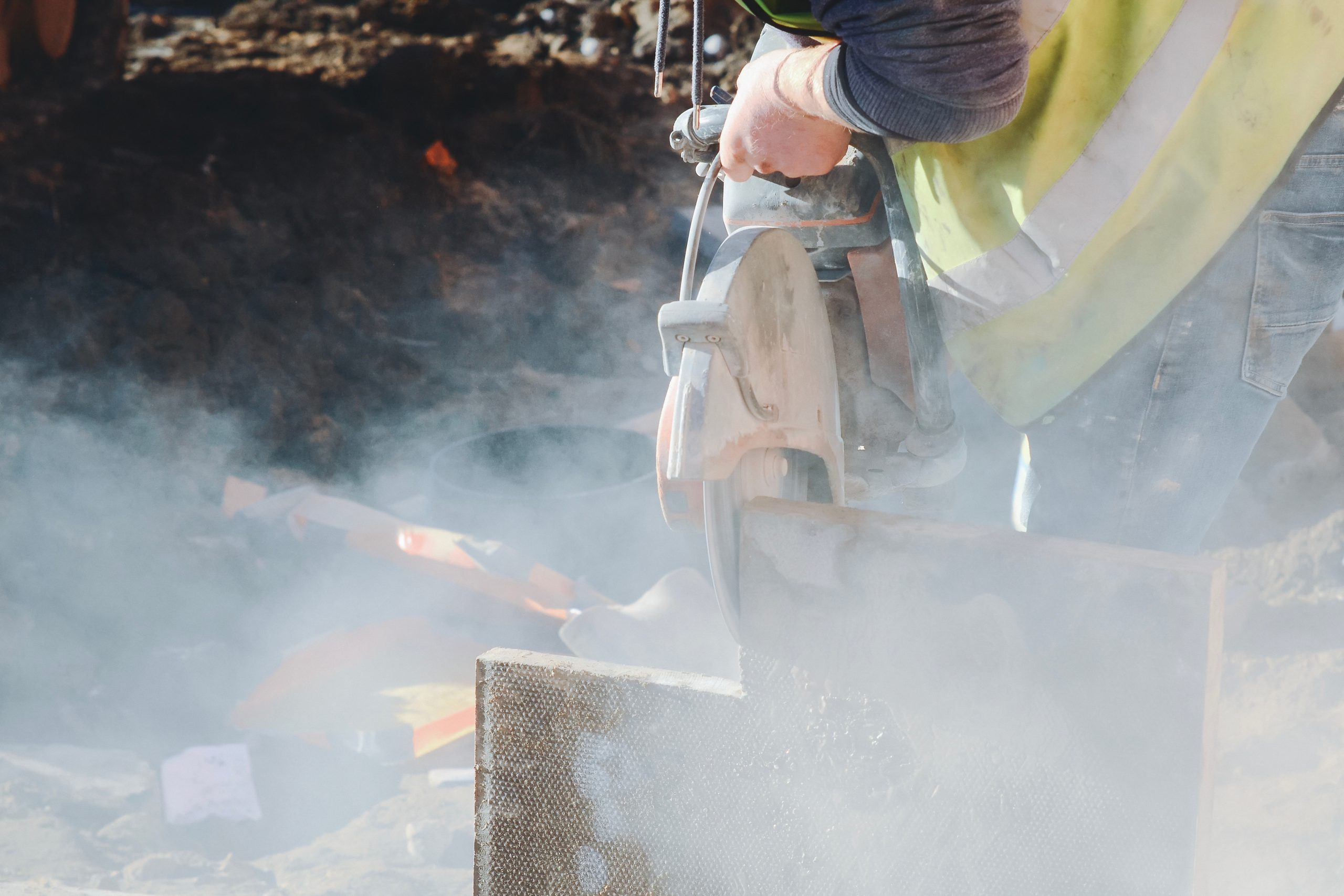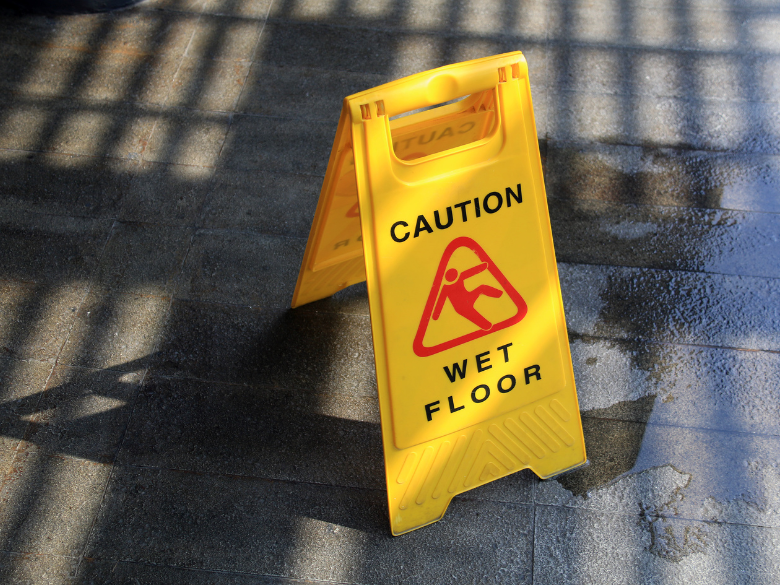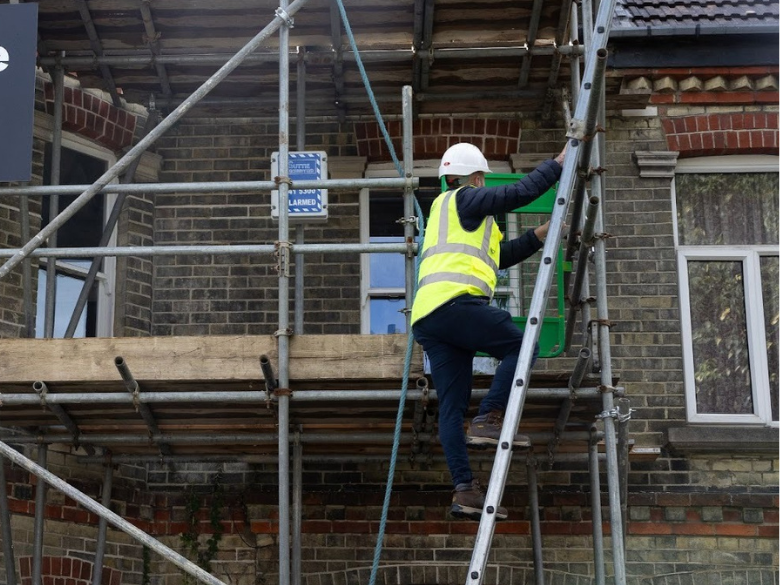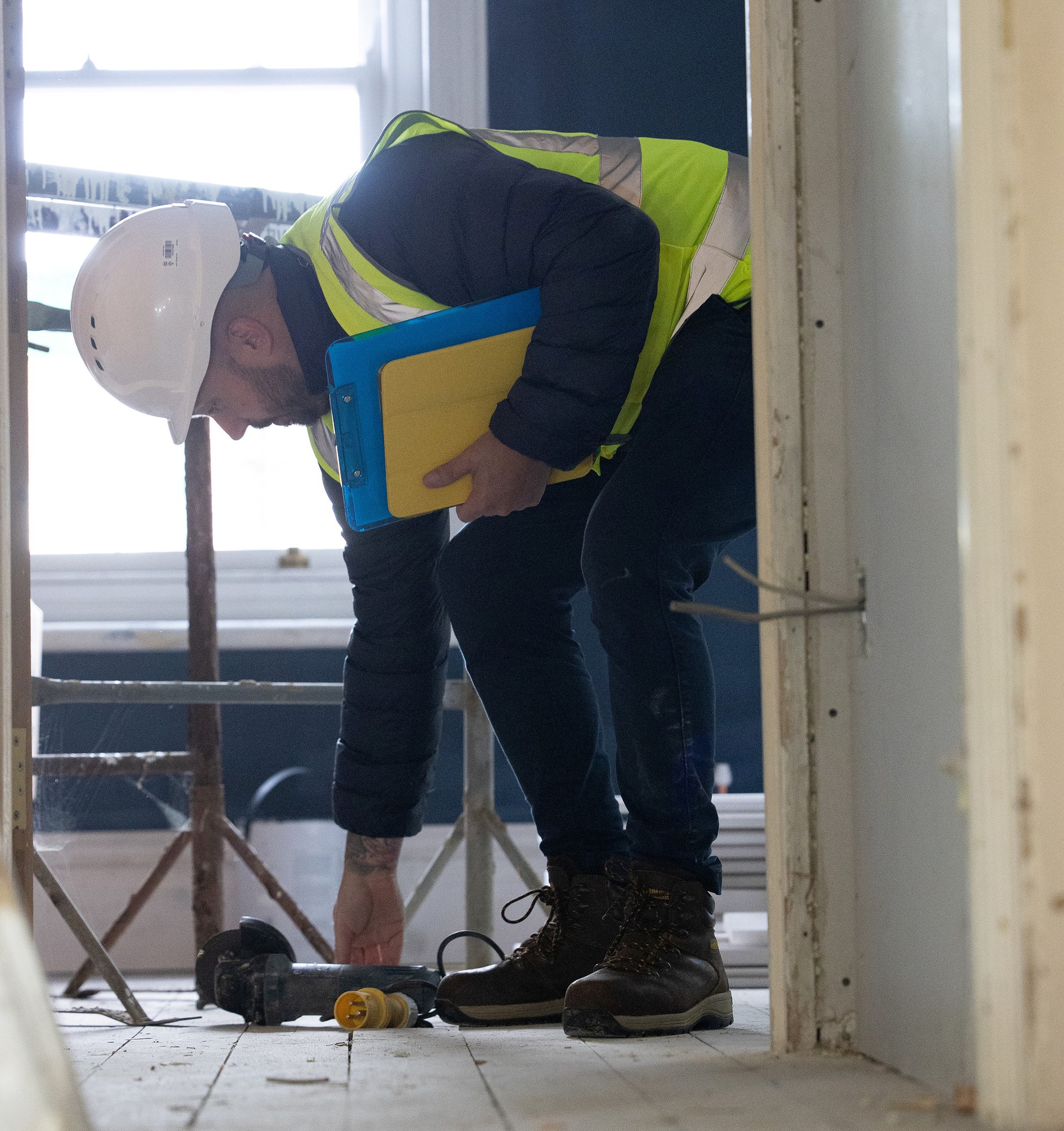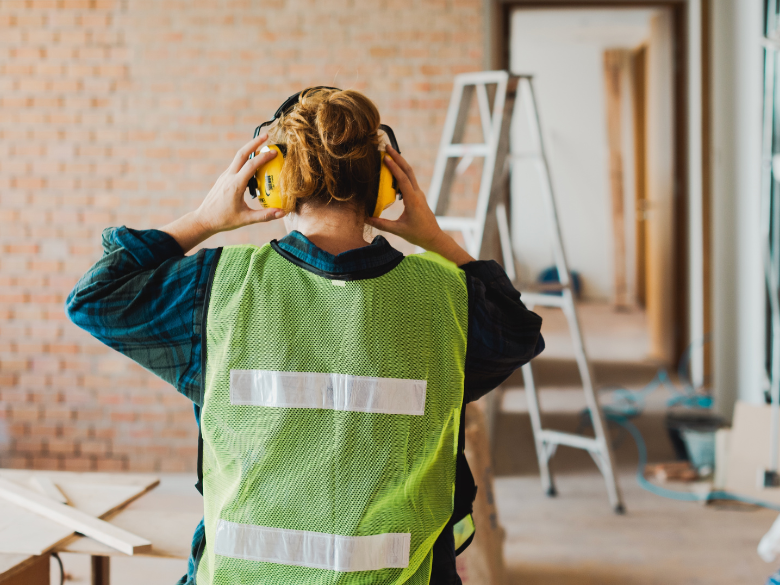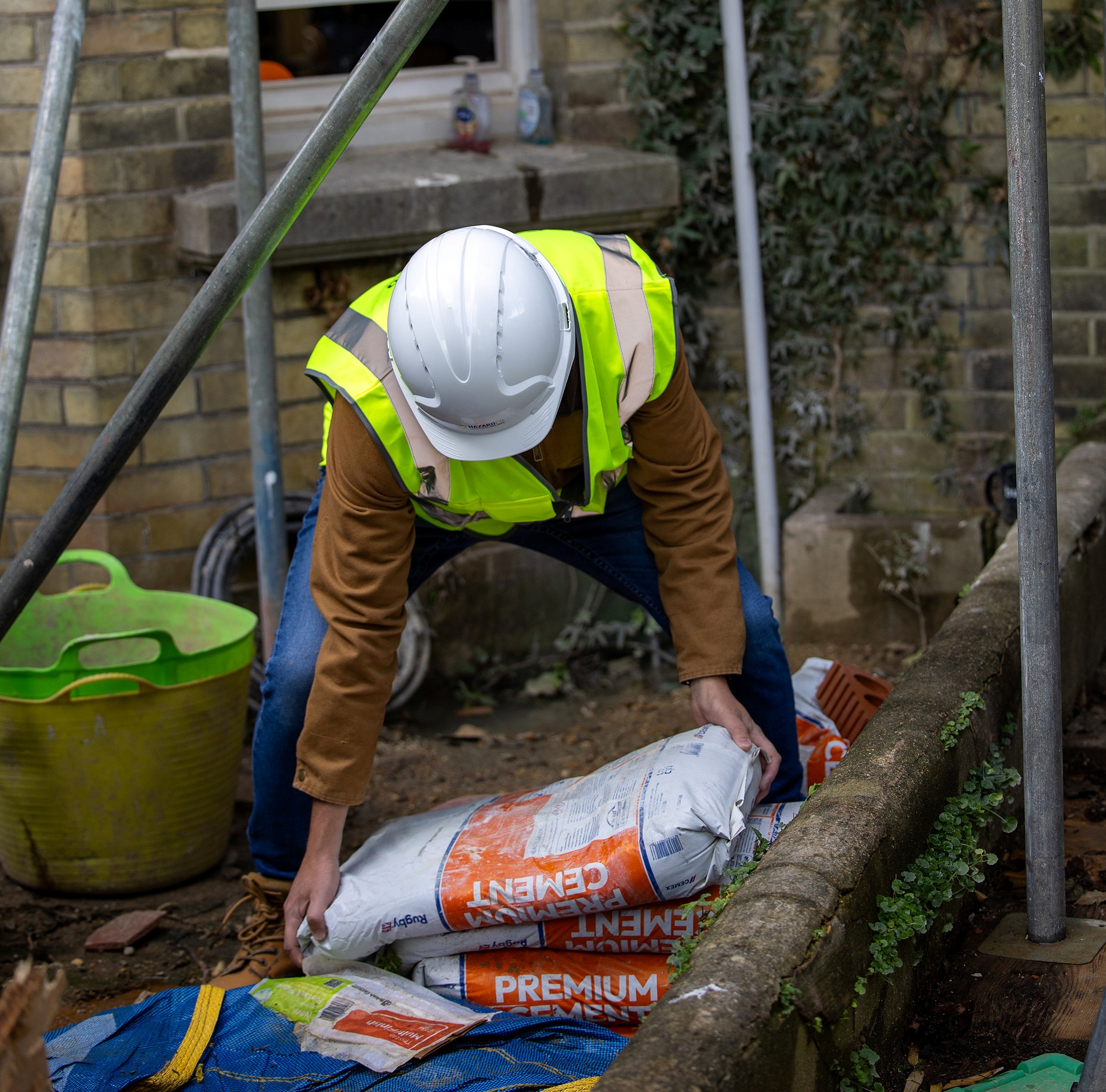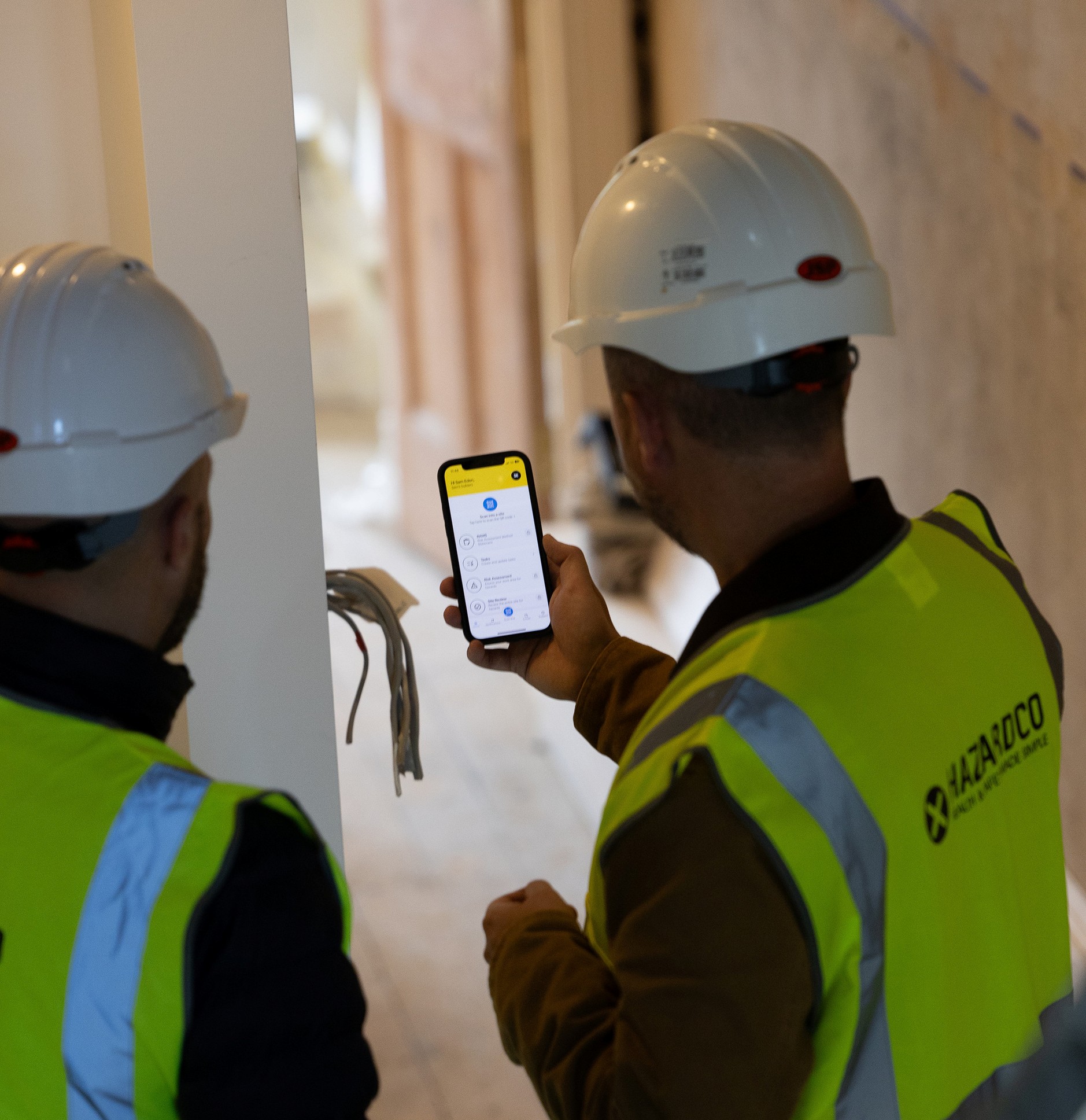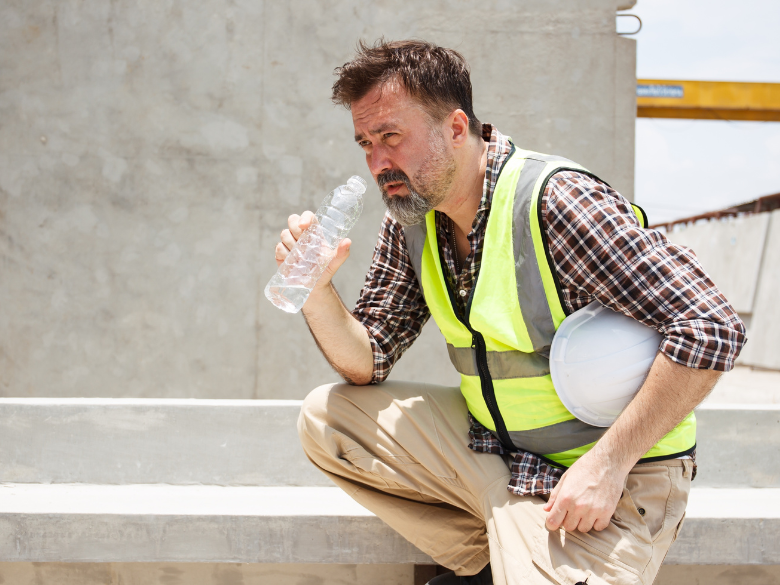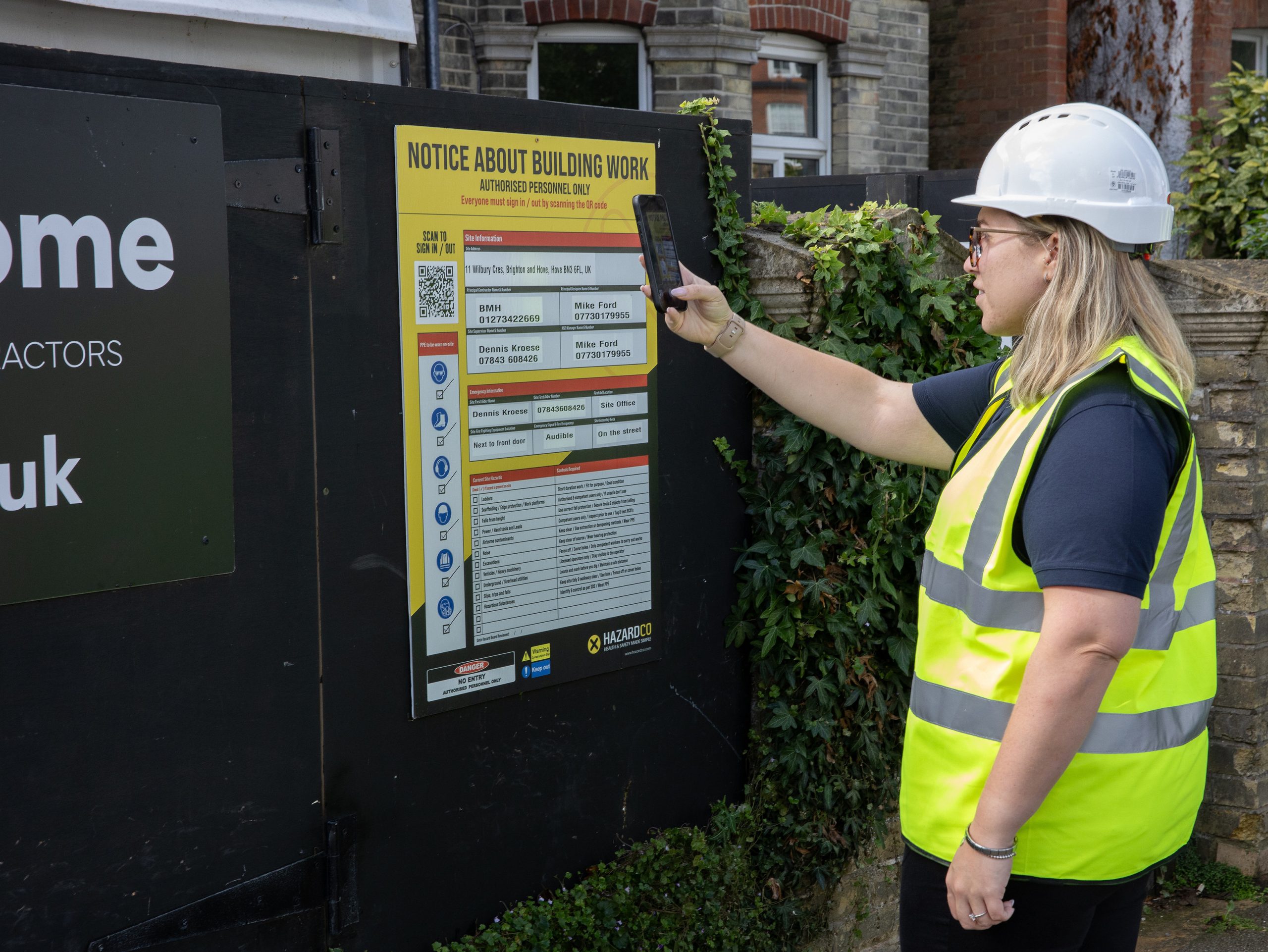
A recent prosecution has highlighted how, even when a death is not caused directly by Health & Safety failings, but – neglect of Health & Safety can still land a site manager in court.
This case emerged after a worker was discovered dead on site – the death was from natural causes, not a fall or structural collapse. But, when inspectors from the Health and Safety Executive (HSE) visited after the RIDDOR report was logged, they found a catalogue of serious failings across the site.
At HazardCo, we wanted to bring this to your attention as it’s so important that your Health & Safety processes are secure across the entire site, not just where you are working.
Essentially, what happened to cause HSE to visit the site did not land the builder in a situation with the conviction and costs, it was what they uncovered over a period of five separate visits, that hadn’t caused any incidents or accidents (yet!).
The HSE doesn’t look kindly on clients who don’t set up proper safeguards. Clients – whether a private individual or a commercial developer – are legally obliged to put in place “suitable arrangements for managing the project” so that those doing the work can carry it out safely.
HazardCo is a Health & Safety company, aiming to embed safe working into the culture of construction sites. Our space is primarily small to medium sized businesses, offering a user-friendly app with guided and templated RAMS, a Construction Phase Plan generator, clear processes, site checklists, a toolbox talk library and more. At HazardCo, we’re on your side and we want to help UK builders do Health & Safety right, without complication and affordably. The last thing we want to do at HazardCo is scare builders in the UK – we say this all the time, we’re on your side.
Get in touch with us to see if we can help you.
Good health and safety isn’t about stopping work — it’s about having simple, clear processes so everyone understands how to get the job done safely.
When you plan the work and manage the risks, you build a site where safety becomes second nature.
Before starting any task, take a moment to check your RAMS and assess the actual conditions on site. A short pause now can prevent accidents and keep everyone safe.
If it’s not recorded, it’s easy to miss and hard to manage.
A clean, well-run site is a safer site. Regular checks keep everyone on track.
Good sites don’t just happen, they’re reviewed and improved every day.
Safety isn’t a box to tick, it’s how you work.
When everyone takes action, speaks up, and looks out for each other, safety becomes part of everyday work, not just an extra task.
It’s that time of year again – the calendar’s full, the jobs are piling up, and everyone’s looking forward to a well-earned break. You’re pushing to get the last few projects over the line, finish the paperwork, and keep the team happy.
We get it. The end-of-year rush can be intense. But when the pressure’s on, it’s easy for safety checks to slide down the list. The focus shifts to finishing fast, not necessarily finishing right.
Before you pack up the tools and head home, take a moment to make sure your sites are still running safely and smoothly. A few minutes of care now can save you a whole lot of stress in the new year.
When things get busy, the best way to stay on top of safety is to make it simple. That’s where the Site Review feature in the HazardCo App comes in.
A quick walk around your site with a Site Review helps you spot what’s working well and what needs a tidy-up before the holidays. Think of it like your site’s end-of-year health check – quick, straightforward, and right there on your phone.
You can snap photos, add comments, and tick off areas as you go, so you’ve got a clear, time-stamped record of your site’s condition. It’s an easy way to confirm that everyone’s working safely, everything’s in order, and nothing’s been missed in the year-end rush.
And if you’re a business owner or site supervisor, it’s a great peace of mind, you’ll know your sites are in good shape while you’re taking that well-deserved break.
Not sure what to look for? No problem. The Site Review feature guides you step-by-step through what to check on-site, from tidy work areas and secured materials to the basics like PPE, access ways, and equipment condition.
It’s designed to make safety simple, even if you don’t have a dedicated health and safety person on your team. You’ll quickly see what’s running smoothly and what could use improvement, and you’ll have a clear, digital record you can refer back to anytime.
That means less guesswork, less paperwork, and fewer headaches when you come back in January.
Before you shut down for the year, take a few minutes to complete a Site Review. It’s a small step that helps you wrap up confidently, knowing your sites are tidy, safe, and ready for a fresh start in the new year.
When you come back after the break, you’ll hit the ground running, not scrambling to fix what got missed in the rush.
So before you call it a year, do one last thing to protect your team, your reputation, and your business: run a Site Review in the HazardCo App.
You’ll finish the year strong, and start the next one even better.
Construction sites come with plenty of obvious hazards but some of the most dangerous ones are the ones you can’t see. One of those hidden risks is respirable crystalline silica dust (RCS).
If you’re cutting, grinding, sanding, or polishing materials like concrete, stone, brick, or mortar, there’s a good chance you’re creating RCS dust. And while it might not look like much, breathing it in can cause serious, long-term health problems.
When silica dust gets into your lungs, it can cause a disease called Accelerated Silicosis. This is a fast-acting, life-threatening condition that scars the lungs and makes it harder to breathe over time. The tricky part? You might not even notice symptoms until the damage is already done.
That’s why it’s so important to understand the risk and take simple steps to control it.
The Health and Safety Executive (HSE) recommends several ways to reduce exposure and keep your crew safe:
Most people who develop silicosis didn’t realise they were at risk. That’s why it’s vital to talk about RCS, train your team, and make sure everyone knows how to stay safe.
At the end of the day, the goal is simple: everyone goes home safe and healthy.
Want to learn more about managing silica dust on-site? Get in touch with the friendly team at HazardCo. We’re here to help you keep health and safety simple.
Slips, trips, and falls, don’t let them take you down! Evaluating safety in your workplace is key!
Slips and trips might seem harmless, but on-site they’re one of the biggest causes of injuries. A bit of ground clutter, a wet floor, or poor lighting is all it takes to put someone out of action.
Here’s the breakdown:
What’s your role?
Businesses must make sure slip and trip hazards are spotted early and dealt with properly. That means checking the site, managing risks, and keeping controls up to scratch.
How to tackle the risks
Practical ways to reduce the risk
Reducing slips, trips, and falls starts with simple, practical steps that everyone on site can take.
Good housekeeping makes all the difference. The HazardCo App has handy checklists to keep your site tidy and safe.
Don’t wait for a near miss to remind you. Start managing slips and trips today and if you need a hand, the HazardCo team is only a call away.
The reality is unsafe work at heights can have devastating consequences. Falls from heights are one of the leading causes of fatalities and injuries in the construction industry within the UK. Preventing falls should be actively managed so that people working at heights are kept safe.
Identifying a task that could lead to a fall is the first step to keeping people safe. Before commencing, put in place the highest level of protection possible to prevent falls.
Consider how long the job will take: The duration of the job will impact how you select the level of protection. If the job is ongoing, the structures chosen need to remain stable throughout the job. You may need to reassess things like ladders and scaffolds throughout the job.
The hierarchy of controls outlines the various controls in order from the highest level of protection to the lowest level of protection. Select the safest, most appropriate control measure from the below hierarchy to prevent injuries or fatalities from falls from heights on your site.
Work on the ground or solid construction
If you can avoid working at height it should be your first option and is always the safest option. Some examples of eliminating the fall risk include using long-handled tools, relocating the task to the ground, and using extension poles for tools.
Use fall-prevention measures
If working from a height is necessary, you need to manage the risk of a fall. Fall prevention measures could be something like an elevated work platform, scaffolding, or guard railing.
Use a work positioning system
Check if a work positioning system like a travel restraint system can be used. A travel restraint system enables a person to work in a way that prevents the person from falling e.g. fixed-length lanyards and static line systems
Use a fall arrest system
Check if a fall arrest system like an industrial safety net, a catch platform or safety harness can be used. This system doesn’t prevent the fall but arrests the fall so you don’t come into contact with the ground e.g. shock absorber on lanyard or anchor point.
Ladder use
It may be appropriate to use a ladder. Ladders do not provide fall protection and as such should only be looked at as a last option when selecting the level of protection. Ladders should only be used for short duration works such as changing a light bulb or paint touch-ups.
Click here to view the HSE step by step guide
Seek professional assistance
Working at height can often be high risk and there are experts who make it their job to complete this work safely. It is often safer and more cost-effective to use height specialists even for shorter jobs.
Make sure everyone knows what to do
Give your workers all the info they need to stay safe.. Conduct toolbox talks and remind them the importance of procedures and completing a Risk Assessment and Method Statement. Encourage them to watch out for each other and speak up if something doesn’t seem right.
Consistency is key
It’s important you and your team are actively involved in ensuring any heights related work is carried out in the safest way possible.
Picture this: you’re starting another day on site, and you’re heading out to your work area. You notice a ladder leaning against the wall, but one of the rungs looks cracked. A few metres away, someone’s left a pile of timber stacked a little too high, and the wind’s picking up. None of it looks like a disaster on its own, but these are the small things that can add up to a serious injury if no one speaks up.
That’s the reality of construction sites. They’re full of moving parts, changing conditions, and plenty of ways things can go wrong. A hazard is simply anything that could hurt you or someone else on-site. The trick is learning to spot them before they turn into incidents. Once you know what to look for, it becomes second nature, like checking your mirrors before pulling onto the road.
Some hazards are obvious, like a roof edge without guardrails or a live wire dangling where it shouldn’t be. Others are subtle. Falls are the number one cause of serious injuries on building sites, and they don’t just happen from rooftops. A wobbly ladder, a scaffold missing a plank, or even a wet surface after overnight rain can quickly lead to a fall and serious injury.
Then there’s the danger of being struck by something. A tool dropped from above, a reversing vehicle in a blind spot, or a swinging load from a crane, these moments happen in an instant and can change lives forever. Electricity brings its own set of risks. Damaged cords, overloaded circuits, or working too close to power lines are all hazards that can cause serious harm in an instant.
And it’s not always about dramatic moments. Sometimes it’s the slow-burn hazards that do the most damage: breathing in dust day after day, being exposed to paint fumes, or dealing with asbestos in an old structure. They might not knock you down on the spot, but they can cause long-term health issues that no one wants to bring home.
So how do you get good at seeing hazards before they catch you out? It starts with building a habit. Each morning, take a few minutes to walk around the worksite. Look at what’s changed since yesterday. Is there new equipment? Has the weather caused damage? Are materials stacked differently? That quick scan can save you from nasty surprises later in the day.
Hazard spotting isn’t something you do once and tick off. It’s an all-day habit. At the start of your shift, scan the site. During the day, keep checking, especially after breaks or when conditions change. At the end of the day, tidy up, secure materials, and make sure barriers are still in place. That way, the next crew isn’t walking into danger before they’ve even started.
And when you do find something? Don’t wait. Stop what you’re doing, warn others, and report it. Even better, document it so there’s a record, because the last thing anyone needs is for the same hazard to crop up tomorrow.
Here’s the thing: safety isn’t just the job of the person with the clipboard. Everyone on-site can use their awareness and judgement to spot hazards. The people who make the biggest difference are the ones who keep asking “what if?”, who don’t rush past something that looks dodgy, and who aren’t afraid to speak up. Passing that mindset on to new workers is how you build a strong safety culture.
Of course, knowing how to spot hazards is one side of the story. Keeping track of them and making sure they’re fixed is the other. That’s where HazardCo makes life easier. Instead of scribbling notes on scraps of paper or trying to remember everything until you see your supervisor, you can log hazards in the app as soon as you spot them using our Site Review feature in the HazardCo App. The system guides you through each step, so nothing falls through the cracks.
Site Supervisors see updates instantly, workers know what’s being done, and the whole process is clear and simple. No chasing paperwork, no confusion, just a guided way to manage hazards that gives everyone peace of mind.
Next time you’re on-site, take 10 minutes to really look around the area. What’s stacked where? What’s changed since yesterday? What could go wrong, and what could you do to make it safer? That small step is the start of a habit that keeps you and your crew safe.
And if you want a system that doesn’t just leave hazard spotting up to memory or luck, HazardCo’s got your back. With our guided approach, you’ll have everything you need to identify, report, and track hazards with confidence. Because at the end of the day, safety isn’t about ticking boxes, it’s about making sure everyone goes home safely at the end of the day.
Every year in September, people around the world mark Global Deaf Awareness Week (22–28 September 2025). It’s a chance to recognise the importance of communication, accessibility, and inclusion for the Deaf community. For those of us working in construction, it’s also the perfect reminder of how precious our hearing is, and how easily it can be damaged by the noise we’re exposed to every day.
Power tools, heavy machinery, vehicles, and hammering – the soundtrack of a busy site is loud. And while it might just feel like “part of the job,” that constant exposure can take a serious toll on your hearing over time.
Noise-induced hearing loss (NIHL) happens when loud sounds damage the sensitive structures in your inner ear. Depending on the type and extent of damage, NIHL can be temporary or permanent. The good news? Unlike many other forms of hearing loss, NIHL is entirely preventable.
It’s also very common. Research shows that 12,000 people in the UK have hearing problems like deafness or tinnitus due to loud noises at work. People who work in noisy industries, like construction, agriculture, carpentry, mining, oil and gas, and the military, are especially at risk.
You might be surprised at just how quickly noise becomes dangerous. Here are some benchmarks:
On a construction site, these levels are reached every day, sometimes without us even realising.
Hearing loss doesn’t usually happen all at once. Symptoms can creep up slowly, which is why many people don’t notice until it’s too late. Some of the most common signs of NIHL include:
There are two main types of NIHL:
Hearing loss doesn’t just affect you at work. It changes your whole life.
And the effects don’t stop there. Untreated NIHL has been linked to:
In short, it doesn’t just change what you can hear, it changes how you live, connect, and feel day to day.
The good news is, hearing loss from noise exposure is 100% preventable. Here’s how:
If you think you might already be experiencing signs of NIHL, don’t ignore it. Talk to your primary care physician or healthcare provider – they can refer you to an audiologist (hearing specialist) or otolaryngologist (ear, nose, and throat doctor) for further tests.
Specialists use a range of hearing assessments to diagnose NIHL and check if there are any other contributing factors. Getting tested early is important: even if hearing loss can’t be reversed, the right support and treatment can help you manage symptoms, protect the hearing you have left, and improve your quality of life.
This week, let’s not just raise awareness, let’s take action. Protect your hearing, look out for your team, and start conversations about noise on-site.
Because hearing isn’t just about safety at work. It’s about being able to connect, laugh, share stories, and enjoy life for years to come.
If someone on your team is working by themselves without other people around and without direct supervision, they’re likely considered a lone worker. Whether it’s a regular thing or just every now and then, it’s your job to make sure they’re safe and supported.
It’s not just remote bush jobs. Lone workers might be team members who:
If this sounds like anyone on your team, there are a few key things you need to think about:
While employing lone workers is permitted under UK legislation, employers retain a legal duty of care towards these individuals. Current regulations require that you take all steps that are ‘reasonably practicable’ to guarantee workplace safety for your staff. As an employer, you must consider:
Lone workers may face more risks, both to their own safety and the equipment or materials they’re using. You need to make sure they’re prepared and protected.Vulnerable workers like apprentices and inexperienced workers shouldn’t be working alone.
Working solo can be lonely. No banter. No team catch-ups. It takes a toll.
Stay connected with regular check-ins like phone calls, group chats, or video calls. It doesn’t need to be fancy, just make it consistent. A quick “How’s your day going?” can go a long way.
Just because someone’s working away from the team doesn’t mean they should miss out on training, updates, or important info. Keep the comms flowing so everyone’s in the know – no matter where they are.
Make sure lone workers have the tools and tech to get the job done safely and stay connected. That includes:
Simple, but it works. Pair your lone workers with a buddy – someone they can check in with daily. Share location, talk through the day’s work, and have a bit of a yarn. It keeps morale up and helps you respond faster if something’s not right.
Create straightforward emergency plans that outline actions to take during incidents such as accidents, health issues, or other urgent situations. These plans must be easily available to lone working staff and updated on a regular basis..
Make sure your team knows what the plan is and how it works. Test it out, and keep emergency contact info up to date.
At the end of the day, look out for your lone workers the same way you would if they were right there beside you. A bit of planning and a good dose of communication make a big difference.
Need help?
If you’re a HazardCo member, the Advisory Team is just a tap away in the app. We’re here to keep things simple and help you keep your team safe, wherever they’re working.
Want an easy way to make your workplace safer without spending a penny? Here’s a simple trick that takes just 30 minutes and can help prevent incidents on the job.
During your next Toolbox talk, get everyone to list their top workplace hazards—the things that could go wrong and cause injuries. This could be anything from slippery floors to dodgy equipment or working at heights.
Once everyone’s shared their list, use the HazardCo Toolbox Meeting feature to record and combine the results into a master list of the biggest hazards in your workplace. This makes sure nothing important gets missed and gives your team a clear safety focus.
Now that you know the biggest risks, it’s time to do something about them. This list can help your workplace:
By using HazardCo’s Toolbox Meeting feature, all of this is tracked and recorded, so your team has solid proof of what’s been done to make work safer.
Incidents at work can be serious, but most of them can be prevented. This simple 30-minute exercise gets everyone involved, so safety isn’t just a rule—it’s part of the way your team works. Plus, with HazardCo’s easy reporting tools, you can keep improving and stay ahead of risks before they become real problems.
So next time you’re in a toolbox talk, speak up—your input could stop someone from getting hurt.
If you have any questions, reach out to the HazardCo team. We are always happy to help.

